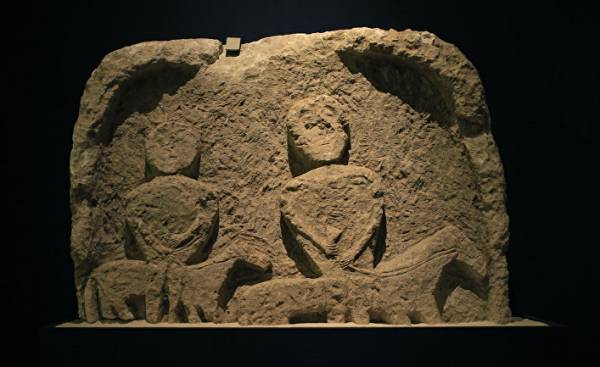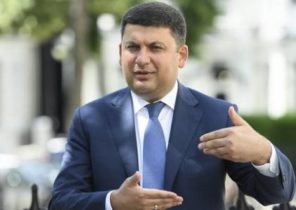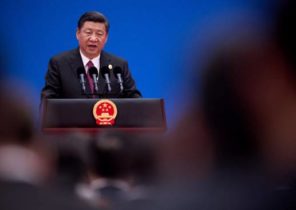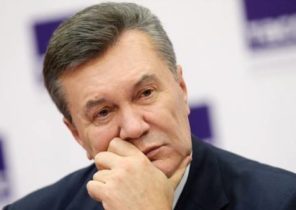
Baroque, with its combination of incompatible, became the main style of the early modern reczpospolita culture. As bizarre looked and the Sarmatian, the leading state ideology of “noble people”. It began with geography — the science presented by the Renaissance and the Great geographical discoveries. Told off in the “Republic of scientists” of the ancient geographers and cartographers (Strabon etc) told that the place of the Commonwealth were once Sarmatia. The ancient anthropologists and historians have filed certain information about themselves and the Sarmatians. Especially advantageous was the fact that those nice barbarians for some time successfully fought with ancient Romans — the people who had the highest rating among the first ancestors of Europeans. Exactly the same warmongering ancestors loved to flaunt and the descendants of the ancient Germans — long cultural sample/competitor for the Eastern neighbors. The ideologists of the Polish Crown in General for some time hesitated to choose whether the ancient ancestor of the vandals (the memory of which was also loud), but medieval antigermans poles made itself felt, and the Sarmatians fought heroically (in the end, and neighbors-the Hungarians have considered themselves descendants of the Huns of Attila in similar circumstances).
It is interesting that iranoazadi Sarmatians at that time was not known, therefore, they quietly ranked as the proto. It had a winning context in the East Slavic territories of the Commonwealth which, together with Poland, was Slavic majority in the state Jagiellonian. In General, the use of existing early modern panslavism (with its privilege of the first “king of the world” — Alexander the great, supposedly given to the Slavs to the veterans of his campaigns) gave the Polish Crown the opportunity to position itself as the leader of Pax Slavica (known attempts to look for Sarmatians “abroad” — the Czechs, Slovaks, Russians, and even in Croatia-Dalmatia). However, a very elastic way of the Sarmatians, mobile knights-horsemen were to identify the Sarmatian roots of the Tatars (and, therefore, as a maximum — to qualify for the Golden Horde heritage, but at least to legitimize the status of the Lithuanian Tatars). I approach it and to “participate” in the ethnogenesis, or at least the elitogenez Lithuanians and other Balts, Vlachs-Moldovans, even Hungarians and East Germans (Prusakov and Livonians).
Imagination then the Ukrainians captured the Sarmatian, however, as Lithuanians, to completely dissolve in it, they did not want (although the “verhatnise” approach Sarmatian theory for a humiliated nation was clearly more acceptable than the barbaric “Woe to the vanquished!” the practices of the medieval Polish Kingdom in XIV-XV centuries). Therefore, if the Lithuanians declared themselves more and highborn descendants of the Romans, the Ukrainians found themselves roxolani (brilliant, shining Alans) — the valiant (for ancient authors) among the Sarmatian tribe (which means dealing with the application of a potential hegemony in the format design of the “new Sarmatia”). The “reserve” Russian intellectuals were still loud in ancient times the Scythians (hence, the hesitation which one to choose?— like Polish “vandal” Patriotic here also took place). Notice also that the motive for successful confrontation with the Roman Empire (in its late Byzantine form) was emphasized in the very popular story of the sea voyages of ancient Rus to Tsargrad-Constantinople.
After the Cossack revolution — when there was a request to go beyond the Sarmatian gentry too — a great career starts named kozarsky theory (where the modern Cossacks — the descendants of the chronicle Kozar-Khazars). However, it is built on principles completely “Sarmatian” (the ancient people of the conqueror — the ancestor of the elite groups in the society; as well as Sarmatians, Kozar mistakenly perceived as Slavs). Symptomatic was the motive that kozary-Khazars stood on the edge of the Drang nach Westen, the onslaught on the West (Greco-Roman Oikoumene), and the ancestors of the poles is actually the traitors who destroyed the unity of the Sarmatian and took over her achievements.
On closer stop on the “Ukrainian” Sarmatian contexts in General. Interesting here is “recognizable Ukrainian” Sarmatian attempts an imaginary historical revenge on the Horde — that’s actually Orehowsky-Roxolani claimed that the Sarmatians were Slavic invaders, who conquered the primitive natives of “Tatar” origin. However, the Horde in question, as mentioned above, the Sarmatian was quite elastic — in particular, Dembicki readily stated that the Tatars are the same Sarmatians and only by faith are different (and therefore to imitate them — it’s like “svy, svy, your”). In the context of the Golden Horde heritage, remarkable special love of all noble military thinkers to the cavalry, and the specific belief that wars are won in the field, not in the fortresses. In General, a certain orientalization drift of Poland in XVII century was noted even by strangers.
In his Ukrainian was the idea of uniting the so-called European Sarmatia (mostly the Commonwealth) Asian Sarmatia (the Muscovy and Tatar kanatami). Call of the ancient “Russian world” Sarmatian and on this basis to force the entire state to the expansion in the Eastern and southern directions, the case for early modern Ukrainian absolutely comfortable. The refusal reczpospolita governments from these foreign policy priorities, fully contoured to the middle of the SEVENTEENTH century shattered and destroyed Ukrainian loyalty Sarmatian homeland.
Extension of collective knighthood of the Sarmatians to the fore, with a suspicious attitude towards the non-elected princes, tyrants, found in Ukraine, its response (particularly the highly dynamic processes of the extinction of the ancient princely families — the pillars of Russia — plus a significant Polonization/deukrainization the rest of the aristocratic elite). However, the Ukrainian knights (with the status of master/Executive managers in local society) have become Cossacks, and not the nobility (the reason here was the excessive militarization of Ukraine, where the gentleman-citizen and landowner, was less “PR” than Cossack warrior). And these “movements” reczpospolita ideas were many (remember the concept of the mid-SIXTEENTH century, representing the border of Russia/Western Ukraine as a “school of the warrior”; he subsequently “geographically” moved to Zaporozhye, and in the EIGHTEENTH century the Sich had already served as a “military school peasant rebel”).
Crusading motive Sarmatian — which actually was not his invention and monopoly — are also easily integrated into the Ukrainian Outlook and found in it the life-giving sources. “Replacing” the commitment of “old faith”-Catholicism contrreformation of loyalty no less than ancient Orthodoxy here is not difficult.
However, the Ukrainian specificity was that neither Sarmatian nor Roksolana nor hazaris not out on the territory of Ukraine — somehow, seriously, beyond such “explanations for scientists.” Master the masses, as it became in the circle of Polish nobility, these ideological concepts are unable (or not yet). Because of this, on the one hand, did not make it to the vulgarization of the theory (in Poland it is — the announcement of the Sarmatians good Catholics, performaction, as well as the attribution of the Sarmatian ancestors of modern institutions — elective monarchy, liberum veto rights, etc.), on the other hand, these phenomena in Ukraine is much inferior to the Polish counterparts in scale and influence. Consequently, modern/postmodern attempts to “rebirth” of elements of Ukrainian Sarmatian very understated and powerful.
***
Next we present some examples of authors and texts that have “services” to the Ukrainian Sarmatian. Of course, the special reflections on the subject at the level of gandarinha Martin Opitz (Opitius, 1597 — 1639) no. All known “scientists comments” concerning the Ukrainian Sarmatian is marked with the seal associated — to a greater or lesser extent. At least there are no “works” on this issue left.
Probably the most striking star of the Ukrainian Sarmatian SIXTEENTH century is Stanislav Orikhovsky the Roxolani (1513 — 1566). This contradictory character of the Ukrainian-Polish borderland, which, symptomatically, known of interest to the image of “Chimera”, fits the role pervoklassnika this historical phenomenon. That glorious “Roxolani” and scored on the historiographic field, where he owns a lot of beginnings, though to the “m” historiography of this “tribune of noble” (more speaker-manipulator than a deep thinker) it is hardly possible to reckon.







